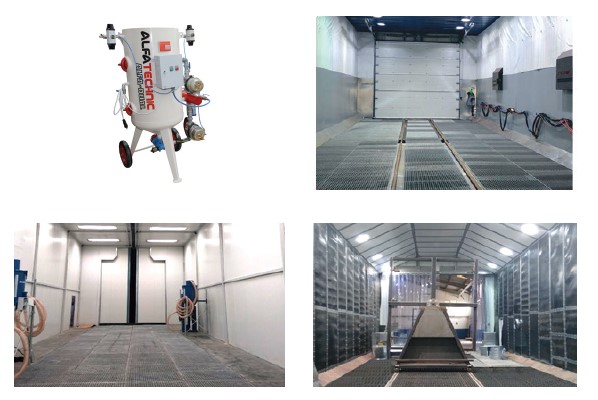In these days when robots have entered every part of our lives, the use of surface treatment technologies in sandblasting and painting processes is one of the new formations. In particular, the use of robotic systems in Final Sandblasting, one of the most difficult processes of surface treatments, has been manifested by increasing process speed and increasing surface quality.
It is important that the products to be sandblasted should be of a certain standard and close types in order for the robotic system sandblasting to remain optimal in investments. This application has many different features compared to the application made by manpower.
These features are primarily the introduction of robots and crane systems instead of an operator. In another change, the systematic and content of the machines in the machine room vary.
Based on these changes, the most important choice in robotic sandblasting plants is the selection of robots which will carry the pressure of the blasting nozzle and manage the spraying according to the need angle and distance on the sanding surface.
It is the design of the sandblasting machine that will feed the robot after the robot is selected in a healthy way and it is designed with the systematic of the recycling system with minimum abrasive loss since it will be a nonstop sandblasting.
If we talk about these changes in more detail, it is an important issue that abrasives come on continuously during the shot blasting of the shot blasting machine.
If continuous abrasive does not come or cuts, some parts of the surface will pass without sandblasting, which will cause problems in the time of inspection or permanent quality problems. The average dimensions of sandblasting boilers are around 200 lt and 300 lt.
The finishing processes of these boilers vary according to robotic sandblasting sector. The nozzle selection of the shot blasting machine is directly proportional to the width and thickness of the surface to be blasted.
If the part to be blasted is a piece such as on-board equipment or wagon, the nozzle dimensions are on average 14 mm or 16 mm in diameter. It is about 30 minutes for this nozzle to finish the 200 lt or 300 lt boiler.
This means that in 30 minutes, the boiler will have abrasive loading time and the process will stop shortly, some points on the surface will not be sanded and the related areas will have to be touched up.
In order to prevent these problems, the Kum Twin Sandblasting ”boilers manufactured by Alfatechnic Machine can provide continuous sandblasting of the robot with closed-circuit abrasive feed without this interruption.
The boiler features two different pressure areas in a body and can automatically feed itself by moving in the same automation plane with the stock silo. Of course, the stock silo should also be fed with an intelligent recycling system.
There are 3 different recycling systems in the literature. The first one is pneumatic recycling system, the second is the mechanical conveyor recycling system and the third is the mechanical sweeper recycling system. The three systems have important details.
The most important criteria to be considered in the selection of the system is to determine the recycling system according to the region and workload.
This choice must be made by the experts of the subject, otherwise unpredictable time losses will create a bottleneck in the entire manufacturing, causing major distress. In general, it should not be forgotten that blasting systems are heavy industry applications.

Tolga Zent
Sales Coordinator
Alfatechnic Makina San. ve Dış Tic. Ltd. Şti.





